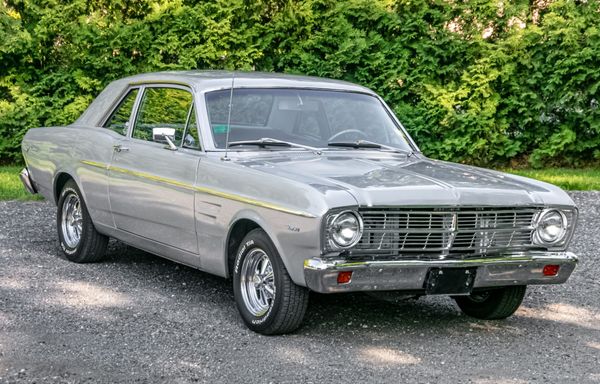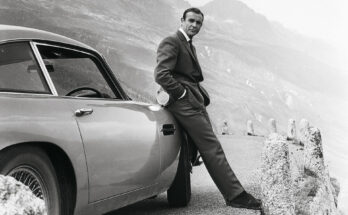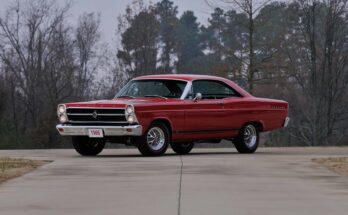The 1968 Ford Falcon was a pivotal model in Ford’s compact lineup, bridging the gap between the bare-bones economy cars of the early 1960s and the more muscular, stylish offerings that emerged later in the decade. As part of the Falcon’s third generation (1966–1970), the 1968 model offered a range of body styles, engines, and trims that appealed to budget-conscious buyers, families, and performance enthusiasts alike. While it lacked the glamour of Ford’s Mustang or the raw power of its larger siblings like the Torino, the Falcon was a practical, affordable, and surprisingly capable car that left a lasting mark on the American automotive landscape.

Design and Styling
The 1968 Falcon wore a boxy yet refined design, reflecting Ford’s shift toward more modern, angular styling in the late 1960s. It was built on the same platform as the Ford Mustang and Mercury Cougar, showcasing its versatility. Available in four main body styles—two-door and four-door sedans, a four-door station wagon, and a two-door hardtop (Falcon Futura)—the Falcon catered to diverse needs. The Futura trim, the upscale variant, added chrome trim, body-side moldings, and a more polished look, giving it a touch of sophistication.The exterior featured a simple, wide grille with single or dual headlights (depending on trim) and a clean, unadorned profile that prioritized function over flash. The Falcon’s compact dimensions—184 inches long and about 2,800 pounds—made it nimbler than full-size Fords like the Galaxie. Inside, the cabin was utilitarian but comfortable, with vinyl or cloth upholstery, a straightforward dashboard, and optional features like a center console, AM radio, and air conditioning. The Futura models elevated the interior with plusher materials and woodgrain accents, appealing to buyers seeking a bit more flair.
Performance
The 1968 Falcon offered a range of engines to suit different driving styles. The base engine was a thrifty 170-cubic-inch (2.8L) inline-six, producing 100 horsepower, ideal for economical commuting. A larger 200-cubic-inch (3.3L) inline-six, with 115 horsepower, was a popular upgrade for better low-end torque. For performance enthusiasts, the Falcon could be equipped with V8 power: a 289-cubic-inch (4.7L) V8 delivering 195 horsepower or, in the sportier Falcon Futura Sports Coupe and Sprint models, a 302-cubic-inch (5.0L) V8 pumping out 230 horsepower.Transmission options included a three-speed manual (standard), a four-speed manual, or a three-speed Cruise-O-Matic automatic. With the 302 V8, the Falcon could hit 0-60 mph in about 8–9 seconds, offering respectable performance for a compact car. Its suspension—independent front with coil springs and a live rear axle with leaf springs—provided a balance of comfort and handling, though it leaned toward a soft ride suitable for daily driving. The Falcon’s lightweight chassis made it a favorite for hot-rodders, who often swapped in larger V8s for drag racing.

Features and Trims
The Falcon lineup was structured to offer something for everyone:
- Base Falcon: The no-frills model, aimed at budget buyers, with minimal chrome and basic interiors.
- Falcon Futura: The mid-tier trim, adding chrome accents, better upholstery, and optional bucket seats.
- Futura Sports Coupe/Sprint: The sportiest variants, with V8 options, sportier styling, and features like fog lights and performance tires.
Starting at around $2,300 for the base sedan (about $20,000 in 2025 dollars), the Falcon was competitively priced against rivals like the Chevrolet Nova, Plymouth Valiant, and Dodge Dart. Optional extras like power steering, power brakes, and a vinyl roof added versatility, while the station wagon’s spacious cargo area made it a practical choice for families.
Market and Reception
The 1968 Falcon was a solid seller for Ford, with over 300,000 units produced across all body styles, though it was outsold by the flashier Mustang, which shared its platform. Positioned as Ford’s compact, affordable offering, it appealed to buyers who wanted reliability and versatility without the higher cost of mid-size or full-size models. The Falcon’s role as a workhorse was evident in its popularity as a fleet vehicle, while the Futura and Sprint models attracted younger drivers looking for a taste of performance on a budget.

Cultural Impact and Legacy
The 1968 Falcon reflected the transitional nature of the late 1960s, a time when compact cars were evolving from bare-bones economy vehicles to more stylish, performance-oriented options. While it didn’t have the cultural cachet of the Mustang, the Falcon’s platform underpinned Ford’s performance legacy, serving as the foundation for the Mustang and later the Maverick. Its affordability and modularity also made it a favorite among DIY mechanics and racers, who saw its lightweight chassis as a blank canvas for modifications.The Falcon name carried special weight in Australia, where the Ford Falcon became an automotive icon, continuing production long after the U.S. model ended in 1970. In the U.S., however, the Falcon faded as Ford shifted focus to the Pinto and Maverick in the 1970s, responding to fuel crises and changing market demands.Today, the 1968 Falcon is a sleeper classic in the collector’s market. Well-preserved Futura Sports Coupes or Sprint models with V8s can fetch $15,000–$30,000, while base models typically range from $5,000–$15,000, depending on condition. Its understated charm and shared DNA with the Mustang make it a favorite among enthusiasts looking for an affordable entry into classic car ownership.


